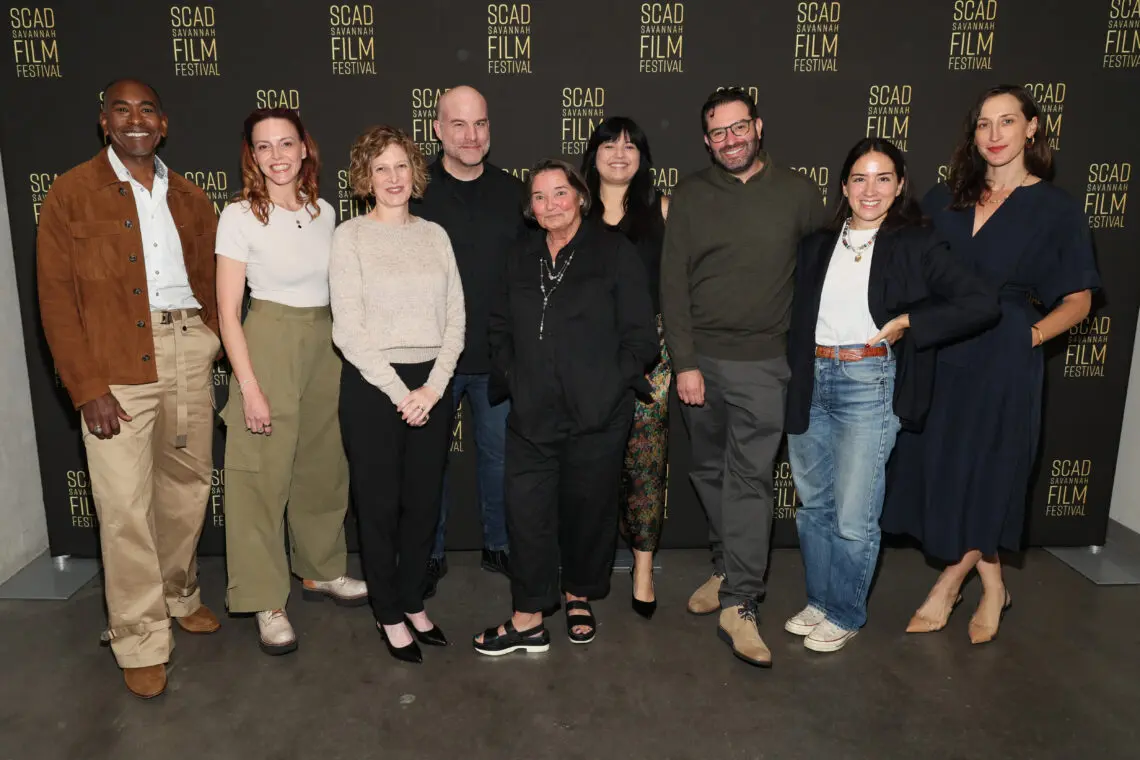The essence of collaboration: Insights from leading artisans
Behind the scenes at the SCAD Savannah Film Festival
This year, the SCAD Savannah Film Festival became the hub for some of the most acclaimed artisans in the film industry. These creative professionals shared their experiences and underscored the importance of teamwork and effective communication in bringing their visionary projects to life. Here’s a look at their discussions and insights, which reveal the intricate interplay between skill, collaboration, and creativity.
The value of a stellar team
Suzanne Stokes Munton, who served as the hair department head on Nosferatu, powerfully emphasized, “It’s really important to have an excellent group that works well together and as a team and is willing to work with other departments. You can’t have any bad eggs.” Munton’s experience shines a light on the crucial yet sometimes overlooked role of humane cooperation behind the scenes. Recognized for her invaluable contributions, she was celebrated alongside other notable artisans including:
- Devendra Cleary, sound mixer on Twisters
- Andrea Datzman, composer on Inside Out 2
- Julie Diaz, supervising dialogue/ADR editor on Y2K
- Jade Healy, production designer on Wolfs
- Danielle Immerman, VFX producer on Kingdom of the Planet of the Apes
- Steve Newburn, makeup on “Sasquatch Sunset”
- Sofia Subercaseaux, editor on “Maria”
- Paul Tazewell, costume designer on Wicked
Technical challenges and unwavering dedication
Among the esteemed panelists was Devendra Cleary, the sound mixer on Twisters. Cleary detailed the complexities he faced, stating, “Everything was all about getting the mics in the best position that we could. We had to use waterproof materials over the mics. Wind protection was really heavy. The first thing I did was hire the best crew I could, the best crew that I knew would do a really good job.” This sentiment was echoed across the panel, reinforcing that communication and trust are key components to successfully leading a team.
Crafting emotional resonance in animation
Andrea Datzman’s work on Inside Out 2 expanded the film’s musical universe, capturing the evolution of teenage Riley. Tasked with illustrating the new emotion, Anxiety, through sound, Datzman took inspiration from the original film’s composer, Michael Giacchino. She explained, “Michael created this simple reverse piano pluck, and it was perfect, so we repurposed that. When we first see Anxiety, you’ll hear that zing layered with a dulcimer.” To develop Anxiety’s recurrent theme, she collaborated with solo violinist Lisa Park, ensuring a distinct and edgy sound that resonated with the character’s emotional tone.
Diving into post-production dynamics
Julie Diaz lent her expertise to the disaster comedy Y2K, offering a glimpse into the world of post-production sound. She mentioned, “The production sound mixer made our jobs a little easier. The film is full of craziness and random things, capturing genuine reactions.” This collaborative ethos highlights how teamwork profoundly impacts the outcome, enabling post-production teams to fine-tune performances effectively.
Bridging locations with artistic ingenuity
As the production designer for Wolfs, Jade Healy transformed Los Angeles into New York. Reliance on meticulous planning and Google Earth was essential. “We built the penthouse, a hotel, and a lobby. Designing is thrilling because you start with a concept and see it come to life,” shared Healy. Her detailed approach showcases the dedication required to seamlessly integrate reality with creative vision.
Visual effects mastery at a global scale
Danielle Immerman shared her perspective on leading VFX teams for Kingdom of the Planet of the Apes. With over 1,500 VFX shots, the project demanded global teamwork. “We had hundreds of people in New Zealand and around the world working from start to finish.” Immerman’s emphasis on collaboration underscores the vast, interconnected nature of the visual effects industry, where trust and coordination are vital for success.
Crafting iconic monsters
Steve Newburn humorously contrasted his experience on Sasquatch Sunset with other more globally collaborative projects. “It was about looking at primates, urban legends, and the truth, blending experience and legend into a cohesive design.” This method highlights the blend of research and creativity required for makeup artistry in fantastical narratives.
Editing with precision and purpose
For Sofia Subercaseaux, editing the opening sequence of “Maria” was particularly challenging. The film, focusing on the last days of opera star Maria Callas, required capturing her essence for viewers unfamiliar with her legacy. “We had to establish who she was and the greatness of her career,” Subercaseux explained. The nuanced approach ensured the audience connected deeply with the character from the outset.
Reimagining iconic costumes
Paul Tazewell’s approach to designing costumes for Wicked involved balancing originality with homage. By honoring the spirit of the characters while integrating his unique perspective, he crafted a fresh yet familiar visual narrative. “I aimed to capture the magic that audiences associate with Glinda,” remarked Tazewell. His thoughtful blend of tradition and innovation illustrates the delicate art of costume design.
Reflections and advice
Concluding the festival discussions, the panelists offered valuable advice for aspiring artisans. Common themes included the importance of seeking help and building confidence. Tazewell shared, “I frequently found myself as the only Black person at the table. Over time, I began to express my needs and perspectives, which was empowering.” These reflections emphasized that growth often involves overcoming personal and professional challenges.
For more insights into the art of filmmaking and the stories behind these intriguing projects, stay tuned and share your thoughts. The world of cinema is ever-evolving, and the contributions of these passionate artisans continue to shape its brilliant future.

 Italian
Italian







